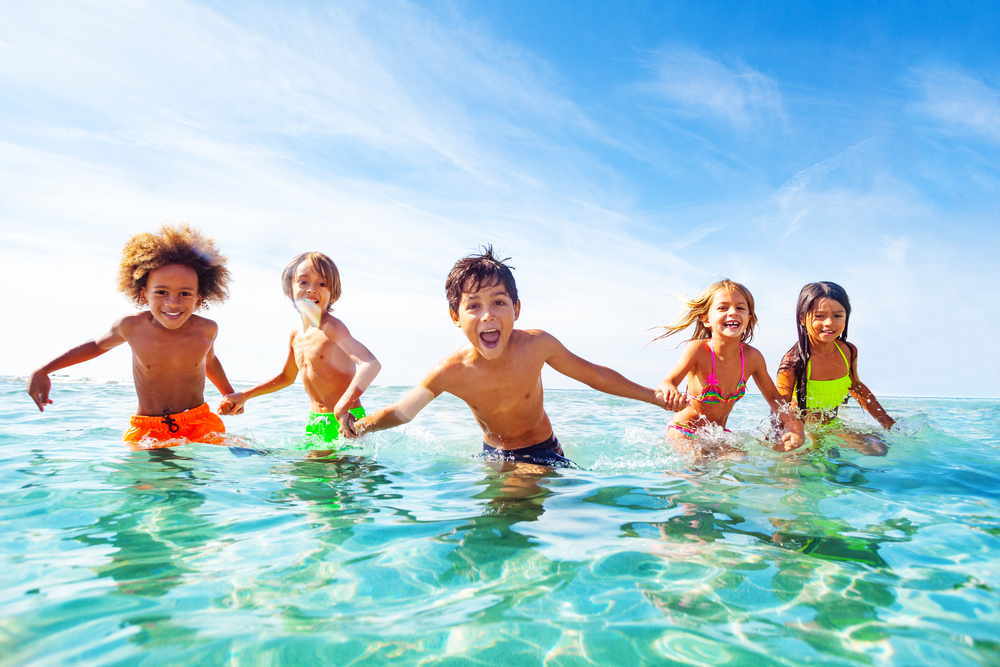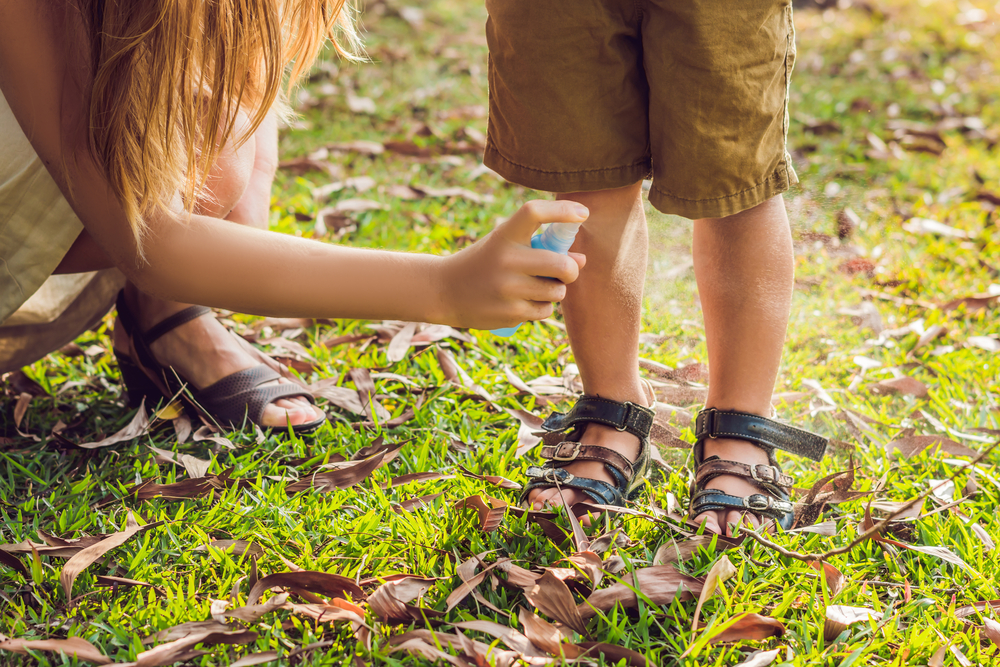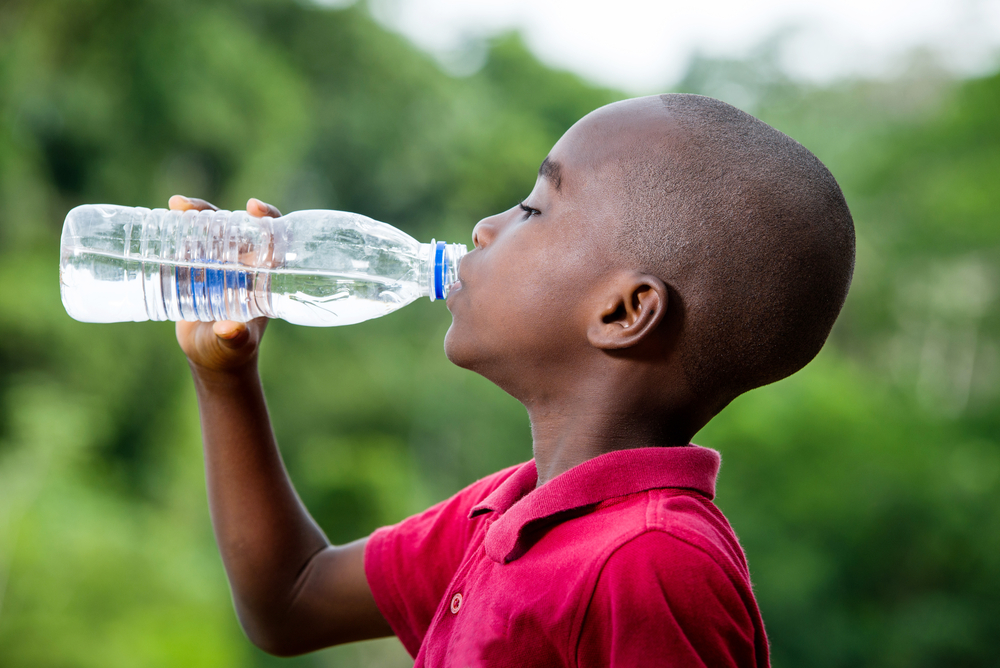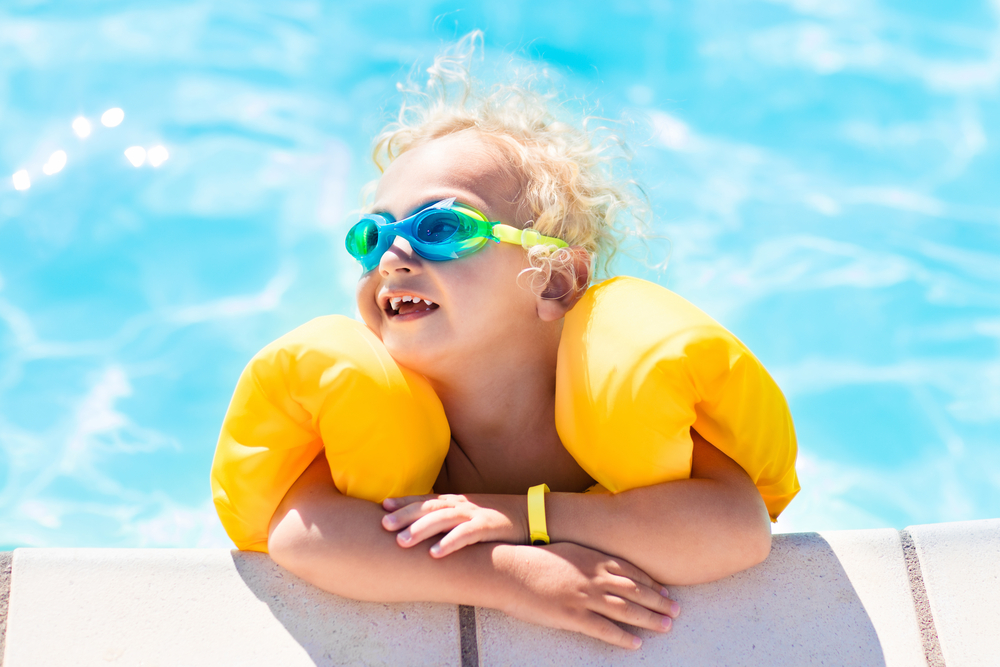
Keeping Cool and Calm in the Summer Heat: Summertime Safety Basics
Trevor Hamlett, MPH, RDN
Health Educator
As temperatures rise and days get longer, getting outside for some fun in the sun is high on many people’s list. Summer is a great time to be active at local parks, pools, beaches, and at the Poe Center’s body-systems-themed playground, PlayWELL Park. It’s important for physical and mental health that we get outside and play, but it’s just as important that we’re being safe. There are many safety concerns to think about, from hydration to bug bites. Don’t fret, below is some key information about summertime safety and even a few fun facts.
Skin Safety
Fun Fact: Skin is the largest organ in the human body and weighs six pounds on average.
The skin is the body’s first line of defense, protecting us from germs and the sun’s UV rays. The skin regulates our body temperature and allows us to feel the summer breeze and the refreshing water on our skin as we swim. It’s important to protect the skin as much as possible. Though the skin helps protect us from the UV rays, we can help by applying SPF 30 sunscreen liberally to all uncovered skin every two hours we’re outside. Another way to protect the skin is to cover up with cool, breathable clothes, such as long-sleeved shirts and pants, or wearing sunglasses and hats. Not only does clothing protect the skin from the UV rays, but it works double duty to protect from insects as well.
Bugs can really take a bite out of summertime fun, but there are precautionary measures we can take to protect our skin and our bodies. Certain insects, such as flies, mosquitos, and ticks can carry diseases, such as Malaria, Zika virus, and Lyme disease. Other than wearing protective clothing, spraying bug spray that contains DEET can keep insects away. For infants and those with sensitive skin, a useful trick is to spray the bug spray on a paper towel, instead of on the body,

and keep it nearby to repel pests. When hiking or camping, apply a special type of bug spray containing .5% permethrin to the outside of clothes and gear. Be sure not to apply this special type of bug spray directly to the skin.
Our skin also helps regulate our body temperature and keep us cool through sweating. As we sweat and the water in sweat evaporates off the skin, the surface of the skin cools. Therefore it’s important to replenish the fluid lost by staying hydrated. Learn more in the next section.
Hydration
Fun Fact: On average, Americans eat 15 pounds of watermelon each year!

In order to stay safe in hot weather, the body must stay hydrated. Though everyone is at risk of dehydration, babies, older adults, and people with long-term health conditions are at a higher risk of dehydration. Watch for symptoms of dehydration, such as fatigue, dark-colored foul-smelling urine, and dry mouth. A simple rule of thumb is to drink at least a cup of water for every 30 minutes of being active outside. To have cold, refreshing water on
hand, try freezing a bottle of water and carrying it outside. Get creative with it – try adding fruit to water, or eating watermelon alongside water.
Watermelon contains more water than most fruits, making it a delicious and hydrating snack. Try these watermelon ‘popsicles’ or this fruit-infused water.
Swim Lessons and Water Safety
Fun Fact: The United States Lifesaving Association reported that in 2021, lifeguards saved over 69,000 lives!

Few things are more refreshing than taking a plunge into cool water on a hot summer day. Any time we visit a pool, beach, or other body of water, we must plan to be prepared, visible, and take precautions so that a day spent in the water is a positive and safe experience.
The American Red Cross recommends that everyone learns how to swim, wears a life jacket, swims with a partner, and learns CPR. Locate a CPR training here. It’s important to also recognize who is more at risk of drowning. According to the CDC, drowning is the leading cause and second leading cause of death in children ages 1-4 years old and 3-12 years old respectively. Be certain that children are wearing bright, warm colors (red, orange, yellow) and flotation devices as needed so they are visible in bodies of water. Lifeguards are there to help, but adults must still pay close attention to children as they swim – children can drown in a matter of seconds.
The Red Cross has a webpage that can help adults and children learn to swim. The website helps locate local lessons at a variety of cost options. Before visiting the pool, beach, or lake, ensure that children have properly learned how to swim. Adults will still have to monitor children as they swim and play, but the ability to swim will significantly decrease the chance of drowning or related incidents.
Before going to a beach or lake, check for closure information on state or local government websites or signs on-site. After swimming, wash hands effectively before eating food, especially after playing in or touching sand. Be sure that little ones have well-fitting swim diapers. Check diapers throughout the day and change as needed to prevent leaks, which can cause illnesses and infections. For more on swim diaper safety, click here.
Summertime is a time for making memories and playing outside in the beautiful warm weather. Those memories do not have to include illness, injury, or infection as long as we take precautions to prevent bug bites, dehydration, water-related incidents, and sunburns. Let’s get outside, be safe, and have a great summer!
Featured Poe Program:
Summertime Safety
Safe outdoor fun is the focus of Summertime Safety. Children learn about protection from the sun, signs of overheating and dehydration, safe warm weather exercise and nutrition, poisonous plants, bug bites and more. Be active, stay safe, and have safe fun in the hot sun.
Program Participants: Grades K – 5th
Program Length: 45 minutes
Coming Soon: MindWELL Garden on our PlayWELL Park open Monday-Friday during business hours.

Featured Resources:
Subject: CPR cardiopulmonary resuscitation
The what, when, and where of CPR, rescue breathing, and other tools for medical emergencies. To find a CPR certification course, click here.

Resources Cited:
National Center for Injury Prevention and the Centers for Disease Control and Prevention (2001). Lifeguard Effectiveness: A Report of the Working Group
Brewster, B. Chris & Richardson, William (August 10, 2001). Personal Communication
American Red Cross (1995). Lifeguarding Today, St. Louis, Missouri: Mosby Lifeline
